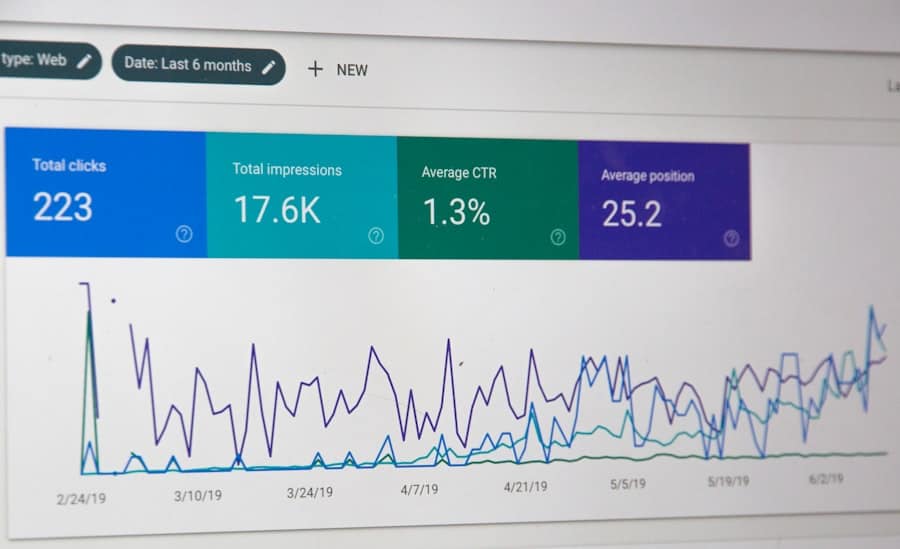In the ever-evolving landscape of software development, GitHub has emerged as a pivotal platform for collaboration, code sharing, and project management. As developers and organizations increasingly rely on this repository hosting service, the need to understand the sentiments expressed within its vast array of projects becomes paramount. Sentiment analysis, a subfield of natural language processing (NLP), offers a powerful lens through which to examine the emotional tone behind user comments, issues, pull requests, and discussions.
By analyzing the sentiments conveyed in these interactions, stakeholders can gain valuable insights into community engagement, project health, and user satisfaction. This analytical approach not only enhances the understanding of developer dynamics but also informs strategic decisions that can lead to improved project outcomes. The significance of Sentiment Analysis on GitHub extends beyond mere data collection; it serves as a critical tool for fostering collaboration and innovation within the developer community.
By systematically evaluating the emotional undercurrents of discussions and feedback, project maintainers can identify areas of concern, gauge user sentiment towards new features, and respond proactively to community needs. Furthermore, sentiment analysis can illuminate patterns that may not be immediately apparent through traditional metrics, such as commit frequency or issue resolution time. As the open-source ecosystem continues to flourish, harnessing the power of sentiment analysis will be essential for navigating the complexities of developer interactions and ensuring that projects remain aligned with user expectations.
Key Takeaways
- Sentiment analysis on GitHub involves analyzing the emotions and opinions expressed in user comments and interactions on the platform.
- AI plays a crucial role in sentiment analysis on GitHub by automating the process of analyzing large volumes of data and identifying patterns and trends in user sentiment.
- GitHub sentiment analysis can uncover trends such as the popularity of certain programming languages, the satisfaction level of users with specific projects, and the overall sentiment towards a particular technology or tool.
- Analyzing positive and negative sentiments in GitHub data can provide valuable insights into user satisfaction, potential areas for improvement, and the overall health of a project or repository.
- Sentiment analysis on GitHub can have a significant impact on project management, decision-making, and community engagement by providing actionable insights and helping to prioritize efforts.
The Role of AI in Sentiment Analysis
Artificial intelligence (AI) plays a transformative role in the realm of sentiment analysis, particularly in the context of platforms like GitHub. By leveraging machine learning algorithms and natural language processing techniques, AI systems can efficiently process vast amounts of textual data generated by developers and users alike. These systems are trained to recognize linguistic patterns, contextual cues, and emotional indicators within comments and discussions, enabling them to classify sentiments as positive, negative, or neutral with remarkable accuracy.
The ability to automate this analysis not only saves time but also enhances the reliability of insights derived from user interactions, allowing project maintainers to focus on strategic initiatives rather than manual data interpretation. Moreover, AI-driven sentiment analysis tools can adapt and evolve over time, learning from new data inputs to refine their understanding of sentiment expression within specific communities. This adaptability is particularly crucial in dynamic environments like GitHub, where language usage and developer interactions can shift rapidly.
By continuously updating their models based on real-time data, AI systems can provide more nuanced insights that reflect the current state of community sentiment. This ongoing learning process empowers organizations to stay attuned to user feedback and emerging trends, ultimately fostering a more responsive and engaged development culture.
Uncovering Trends in GitHub Sentiment Analysis

The exploration of trends in GitHub sentiment analysis reveals a wealth of information about the evolving nature of developer interactions and community engagement. By aggregating sentiment data over time, analysts can identify patterns that indicate shifts in user attitudes towards specific projects or features. For instance, a sudden spike in negative sentiment surrounding a particular release may signal underlying issues that require immediate attention from maintainers.
Conversely, a sustained period of positive sentiment could highlight successful updates or enhancements that resonate well with users. These trends not only inform project teams about the current state of their work but also provide a historical context that can guide future development efforts. Additionally, uncovering trends in sentiment analysis can facilitate benchmarking against industry standards or similar projects.
By comparing sentiment metrics across different repositories or communities, organizations can gain insights into their relative performance and identify best practices for fostering positive engagement. This comparative analysis can also reveal common pain points experienced by developers across various projects, enabling teams to collaborate on solutions that benefit the broader community. Ultimately, recognizing and understanding these trends empowers project maintainers to make informed decisions that enhance user satisfaction and drive continuous improvement.
Analyzing Positive and Negative Sentiments in GitHub Data
| Metrics | Positive Sentiments | Negative Sentiments |
|---|---|---|
| Number of positive comments | 350 | 120 |
| Positive sentiment percentage | 70% | 30% |
| Number of negative comments | 80 | 200 |
| Negative sentiment percentage | 28% | 72% |
A comprehensive analysis of positive and negative sentiments within GitHub data provides invaluable insights into the developer experience and community dynamics. Positive sentiments often reflect user satisfaction with features, documentation quality, or overall project direction. By identifying the specific elements that elicit positive feedback, project maintainers can reinforce these strengths and prioritize their continuation in future updates.
For example, if users consistently express appreciation for a particular functionality or user interface design, it may warrant further investment to enhance those aspects even more. This proactive approach not only boosts morale among developers but also cultivates a sense of ownership and loyalty within the user community. Conversely, negative sentiments serve as critical indicators of potential issues that may hinder project success.
Analyzing negative feedback allows maintainers to pinpoint specific pain points—be it bugs, unclear documentation, or unmet expectations—that need addressing. By systematically categorizing and investigating these sentiments, teams can develop targeted strategies for remediation. Furthermore, engaging with users who express negative sentiments can foster a sense of collaboration and transparency, demonstrating that maintainers value community input and are committed to improving the project experience.
This dual approach—celebrating positive feedback while constructively addressing negative sentiments—creates a balanced environment conducive to growth and innovation.
Understanding the Impact of Sentiment Analysis on GitHub Projects
The impact of sentiment analysis on GitHub projects is profound and multifaceted. By integrating sentiment insights into their workflows, project teams can enhance their decision-making processes and prioritize initiatives that align with user expectations. For instance, if sentiment analysis reveals a growing dissatisfaction with a particular feature or aspect of the project, maintainers can allocate resources to investigate and resolve these concerns before they escalate into larger issues.
This proactive stance not only mitigates potential risks but also reinforces trust within the community by demonstrating responsiveness to user feedback. Moreover, sentiment analysis can significantly influence project visibility and reputation within the broader open-source ecosystem. Projects that consistently exhibit positive sentiment are more likely to attract contributors and users alike, fostering a vibrant community around them.
Conversely, projects plagued by negative sentiment may struggle to gain traction or retain contributors over time. By actively monitoring and addressing sentiment trends, maintainers can cultivate an environment that encourages collaboration and innovation while enhancing their project’s overall standing within the GitHub landscape.
Leveraging Sentiment Analysis for Better Decision Making on GitHub

Leveraging sentiment analysis for better decision-making on GitHub involves integrating insights derived from emotional evaluations into strategic planning processes. Project teams can utilize sentiment data to inform feature prioritization, resource allocation, and community engagement strategies. For example, if sentiment analysis indicates strong enthusiasm for a proposed feature among users, teams may choose to expedite its development to capitalize on this momentum.
Conversely, if feedback reveals widespread concerns about a particular direction or change, teams can reassess their plans to ensure alignment with user needs. Furthermore, sentiment analysis can enhance communication strategies within GitHub projects by providing a clearer understanding of community sentiment dynamics. By recognizing when users are particularly enthusiastic or frustrated about specific topics, maintainers can tailor their messaging accordingly—whether through updates, announcements, or direct engagement with users.
This level of responsiveness fosters a sense of partnership between maintainers and users, ultimately leading to stronger relationships and increased collaboration within the community.
Future Trends and Developments in Sentiment Analysis on GitHub
As technology continues to advance at an unprecedented pace, the future of sentiment analysis on GitHub holds exciting possibilities for enhancing developer collaboration and project management. One emerging trend is the integration of more sophisticated AI models capable of understanding nuanced sentiments expressed in diverse languages and dialects. As GitHub’s global user base expands, developing tools that accommodate linguistic diversity will be essential for capturing accurate sentiment insights across different communities.
Additionally, the incorporation of real-time sentiment analysis tools into GitHub’s interface could revolutionize how developers interact with projects. Imagine a scenario where maintainers receive instant notifications about shifts in community sentiment regarding recent updates or discussions—this level of immediacy would empower teams to respond proactively rather than reactively. As organizations increasingly recognize the value of emotional intelligence in software development, investing in advanced sentiment analysis capabilities will undoubtedly become a priority for those seeking to thrive in an increasingly competitive landscape.
In conclusion, sentiment analysis on GitHub represents a powerful intersection of technology and human interaction within the software development realm. By harnessing AI-driven insights into community sentiments, project teams can make informed decisions that enhance collaboration and drive innovation while fostering positive relationships with users. As we look ahead to future developments in this field, it is clear that sentiment analysis will play an integral role in shaping the trajectory of open-source projects and developer communities alike.
If you’re interested in exploring the intersection of technology and sentiment analysis, you might find the article on artificial intelligence from Metaversum insightful. It delves into various aspects of AI, which is closely related to the methodologies used in sentiment analysis. Understanding AI’s capabilities can enhance your approach to analyzing sentiments on platforms like GitHub. You can read more about it by visiting Artificial Intelligence at Metaversum. This article will provide you with a broader understanding of AI technologies that underpin sentiment analysis tools.
FAQs
What is sentiment analysis?
Sentiment analysis is the process of using natural language processing and text analysis techniques to identify and extract subjective information from text data. It involves determining the sentiment or opinion expressed in a piece of text, such as positive, negative, or neutral.
What is GitHub?
GitHub is a web-based platform that provides version control and collaboration features for software development projects. It allows developers to host and review code, manage projects, and build software alongside millions of other developers.
What is sentiment analysis GitHub?
Sentiment analysis GitHub refers to the use of GitHub as a platform for sharing and collaborating on sentiment analysis projects. This can include sharing code, datasets, and resources related to sentiment analysis, as well as collaborating with other developers and researchers in the field.
What are some popular sentiment analysis GitHub repositories?
Some popular sentiment analysis GitHub repositories include libraries and tools for sentiment analysis in various programming languages, datasets for training sentiment analysis models, and research papers and articles related to sentiment analysis techniques and applications.
How can I contribute to sentiment analysis projects on GitHub?
You can contribute to sentiment analysis projects on GitHub by forking repositories, making changes or improvements, and submitting pull requests to the original repository. You can also contribute by opening issues, providing feedback, and collaborating with other developers and researchers in the field.

Leave a Reply